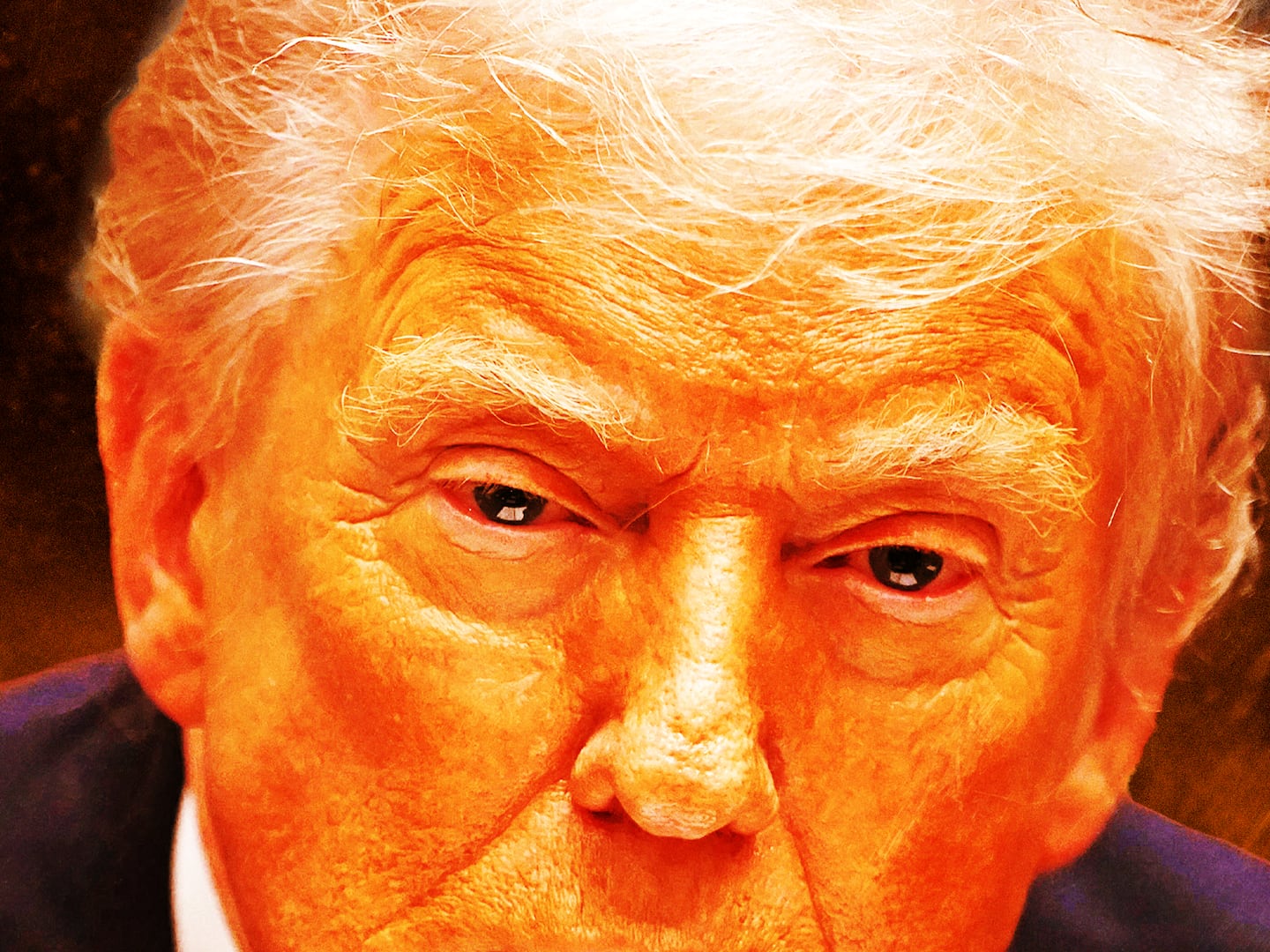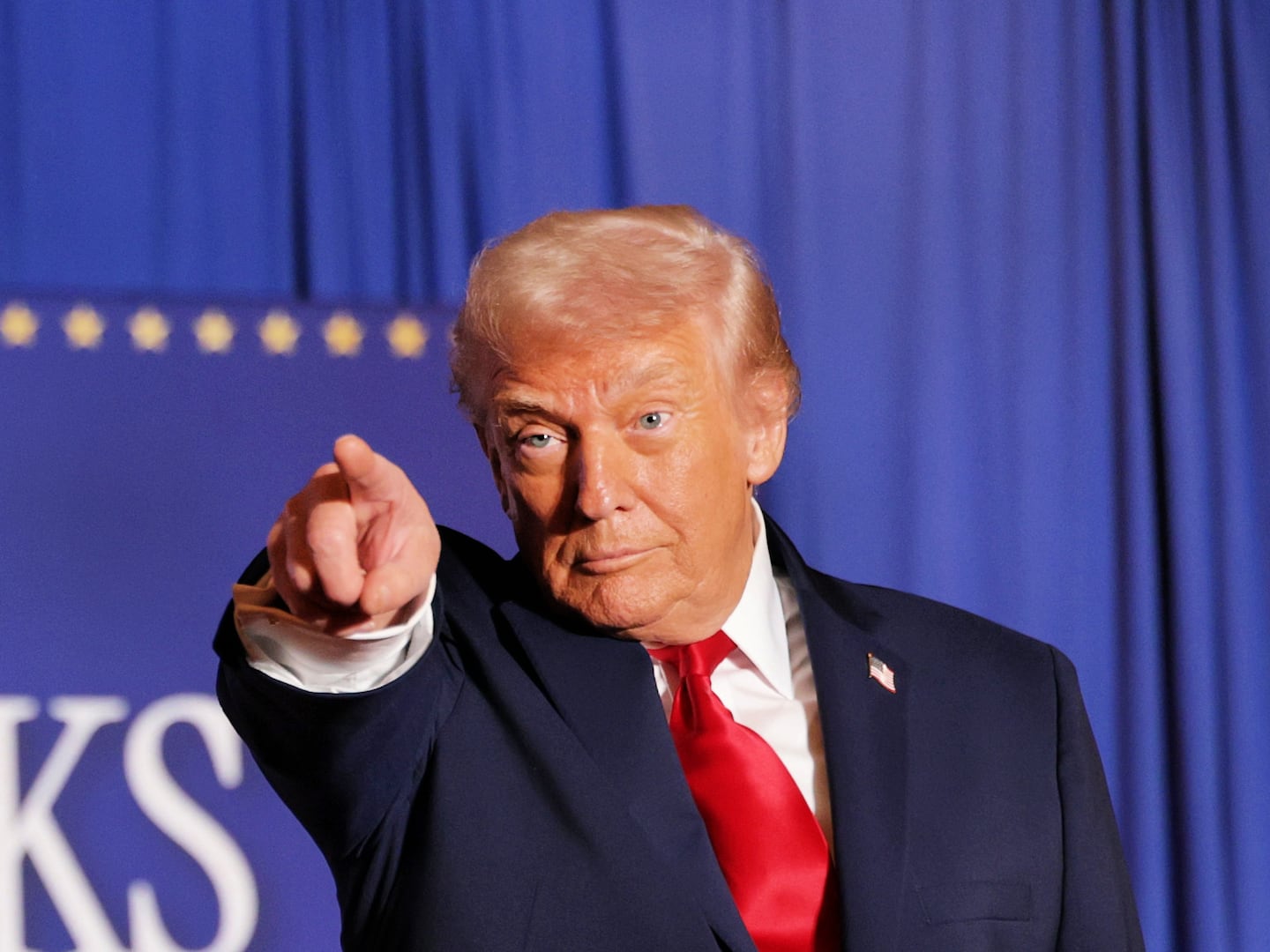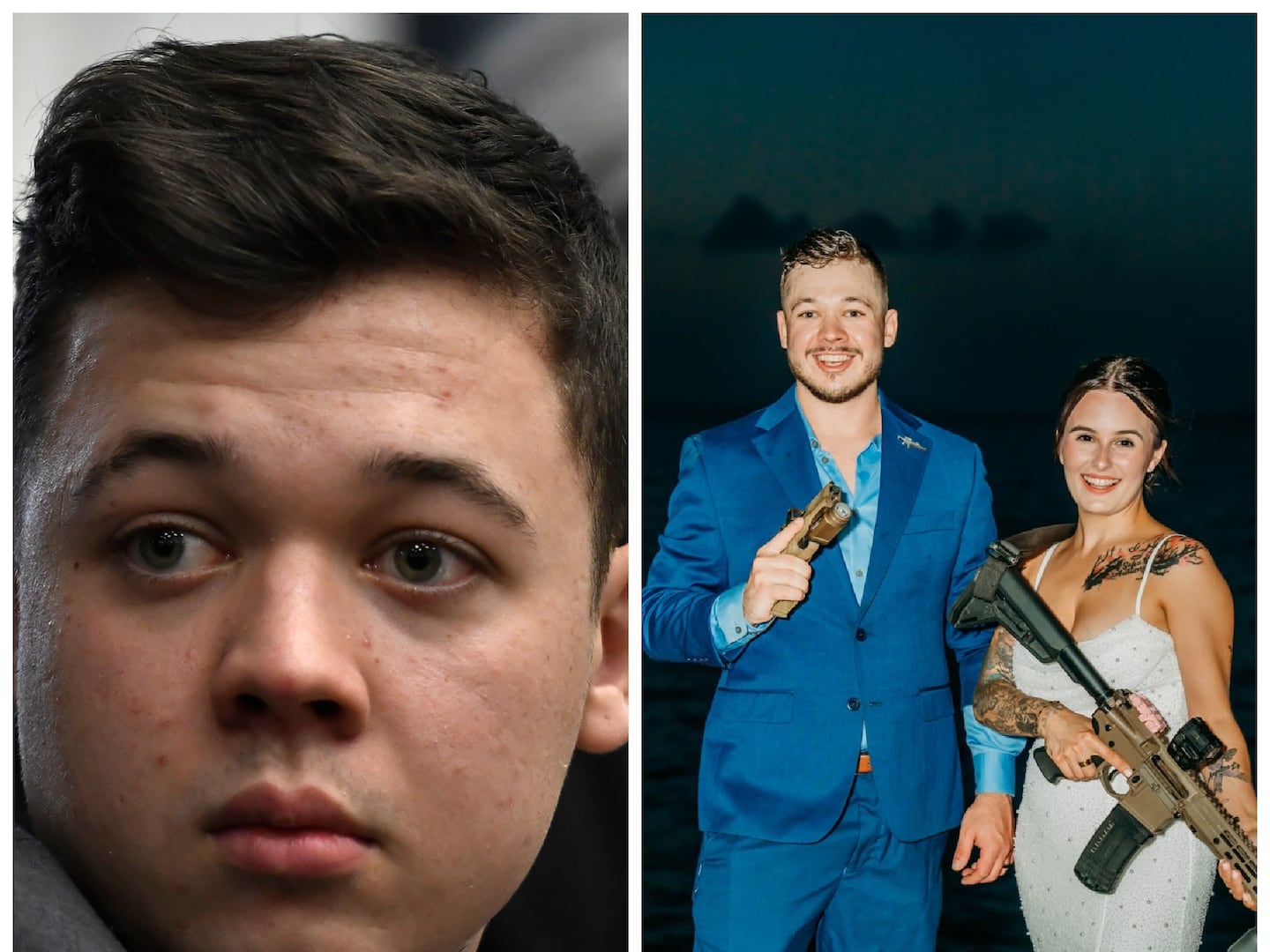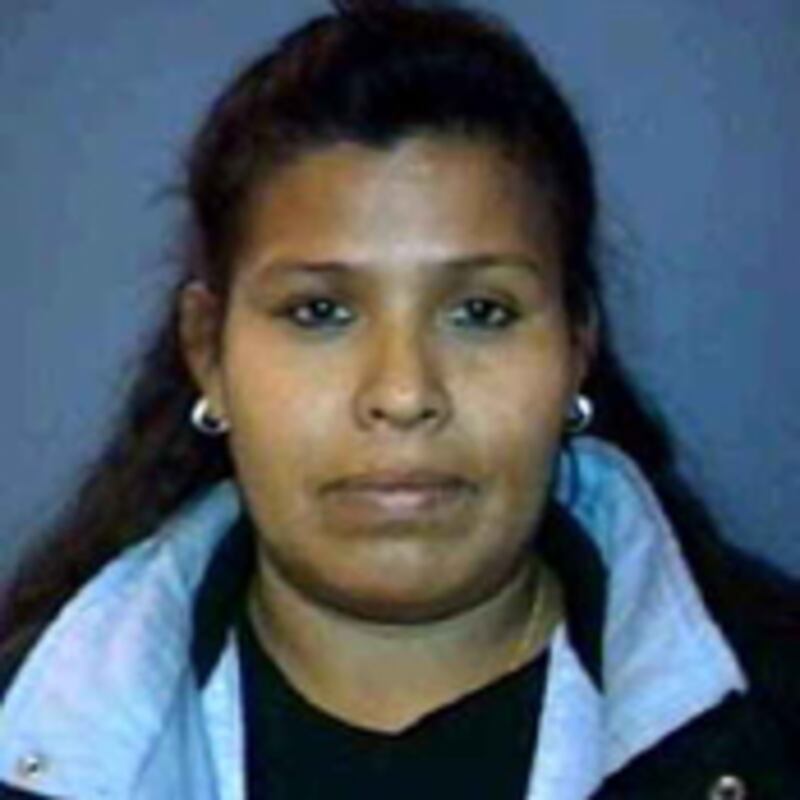
Five days after a wild gun battle in Los Angeles that sent school children streaming out of their classrooms, and left a gang member dead in the street, the phone rang at the home of Eduardo Alvarez-Marquez.
The reputed mastermind behind a human smuggling ring, Alvarez-Marquez had brought many unlikely deliveries across the Mexican border, including a three-month-old baby and a truckload of Chinese workers hidden in a freezer truck.
Maria Leon sat like the queen spider in a web spun across the border from north to south—head of a massive criminal enterprise of drug-dealing and murder.
This call, however, was for a "special job."
Maria "Chata" Leon, the then-44-year-old mother of 13 children, and the much-feared head of a drug-dealing dynasty, was stuck in the border town of Mexicali. It was one of her children, Danny "Clever" Leon, who, wielding an AK-47, had died in the 2008 shoot-out with police, and now she wanted to attend his funeral in the United States.
Eventually, she would get her way—paying respect to her son at the cemetery where Michael Jackson and Walt Disney are also buried—right in front of LAPD gang officers. As politicians on all sides of the political spectrum argue about illegal immigration, an ongoing federal case in Los Angeles, prompted by an earlier investigation into the Leon family's criminal activities, shows the extent to which some gang members and human smugglers in Southern California have established a parallel—and largely invisible—reality, shifting like shadows across the Mexican border, eluding capture for crimes committed on both sides.
In this world, law enforcement officials say, gang members collaborate closely with human smugglers, and those smuggled across the border, sometimes end up on the streets, trying to pay off their debts to these coyotes by dealing drugs.
Before she got stuck in Mexicali, Maria Leon sat like the queen spider in a web spun across the border from north to south—head of a massive criminal enterprise of drug-dealing and murder, some of it backed by the militant revolutionary group known as the Mexican Mafia, according to investigators.
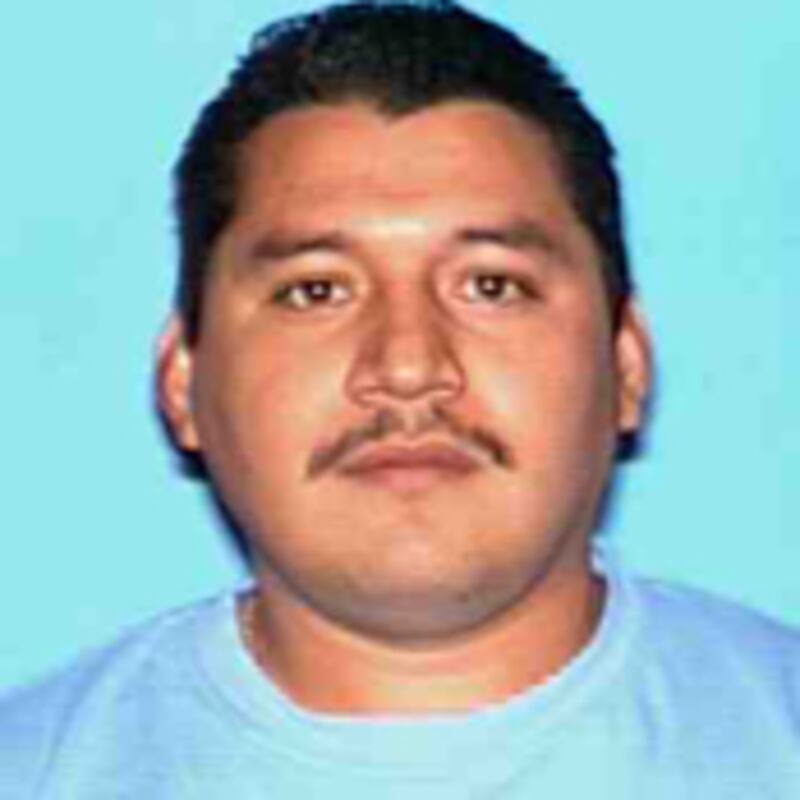
For decades, the Los Angeles Police Department sought to dismantle the power of the gangland matriarch, and her extended family but, ensconced in a heavily fortified house on Drew Street in northeastern L.A., in a notorious, gang-infested neighborhood filled with mostly single-family homes and gang-controlled apartments, the gang seemed almost impossible to dislodge.
When officers finally raided the Drew Street compound, they discovered a shrine to the patron saint of narco trafficking, Jesus Malverde as well as surveillance cameras and an extensive weapons stash that included a Tech 9 machine gun, a Smith Corona Rifle, a bag of explosive devices, and a “Muscle Man” Taser gun.
From these headquarters, Maria Leon and her family had turned the neighborhood into a hellhole.
"It was a nightmare," said former LAPD officer Steve Aguilar. "They were shooting in the air to intimidate us. It sounded like a war zone."
Maria Leon had been at the heart of that war. However, at some point, she had left L.A.—possibly because of her repeated run-ins with the law—and she was now stuck in Mexicali, with a rap sheet in the U.S. that ranged from child endangerment to drug peddling.
But her son had been shot, and she wanted to bury him in the U.S. and so, unable to cross the border legally, her only option was to make use of her own criminal network to get in touch with some human smugglers. One of her other sons, Francisco Real, called Alvarez-Marquez to ask if he could get Leon back in time for her son's funeral services, scheduled for a few days later.
This was the "special job."
However, on such short notice, the options were limited, Alvarez-Marquez explained. The ring could help Leon scale the border fence, or get to the highly polluted New River, which flows north from the border city of Mexicali through Calexico, California—but then she'd have to swim underneath the fence.
"The fastest I can do for you is the jumping," Alvarez-Marquez said in Spanish.
"Honestly, I need her here before Thursday," answered Real, saying he'd be able to have his mother at the smugglers' secret "drop house" in Mexicali within the hour. "If you have to leave her son behind, that's no problem. Let the kid stay. She is the one," he said, according to federal wiretaps. "It's urgent."
Unknown to Real and Alvarez-Marquez, the feds were listening in on their conversation. As part of a wide-ranging, five-month investigation, federal authorities began to wiretap Real in 2008, believing him to be one of the ringleaders of the Drew Street gang. And in so doing, they unraveled the case of the human smuggler, too.
Earlier this month, Alvarez-Marquez pleaded guilty to conspiracy to smuggle, transport, and harbor illegal aliens—and was convicted of two other related charges.
His attorney, Stephanie Ames, didn't return calls for comment.
But the transcripts of the wiretaps provide fascinating reading.
In one conversation, Alvarez-Marquez talked down a whiny felon who had skipped out on domestic violence classes; in another, his mother demanded extra pay for staying up late with a smuggled three-month-old she deemed "a cry baby."
He also appeared to make plans to smuggle five Chinese immigrants over the border in a truck, telling one of his associates to charge the Chinese double the regular smuggling fee. Tipped off by the wiretap, federal agents in another incident pulled over a locked freezer truck, loaded with 26 people. “The temperature was below freezing,” said Assistant United States Attorney Ariel Neuman, who prosecuted the case along with Nicholas Trutanich. “They had to get bolt cutters to get them out.”
According to federal prosecutors, Alvarez-Marquez also arranged Mexican guides to help immigrants jump over the border fence, and wade through the New River. Other guides walked the immigrants through the port of entry in the small border town of Calexico, using fake green cards.
If the service was simply to lead immigrants to the border fence, Alvarez-Marquez charged $2,800; those who needed a guide or "coyote" to walk them through the port of entry with stolen or falsified papers was charged $3,800; and immigrants who needed to be driven across the border, or those with a criminal record, had to pay $4,300, according to investigators, who also believe that the Leon family forced some of the young, male immigrants to sell drugs on Drew Street.
However, once federal authorities began bugging Real's phone, they soon found out about Alvarez-Marquez, who was charged with smuggling last year. (He is scheduled to be sentenced this November.)
For her part, Maria Leon is serving an eight-year sentence in a federal prison, having been arrested in 2008 by immigration agents, on her way visit a neighbor. Many others in the gang have pleaded guilty and are serving lesser sentences. Real, meanwhile, is cooperating with state and federal investigators, and has publicly testified against some of his former gang—and family—members.
On Drew Street, the war-like sounds have died down, and there's little evidence of the matriarch and her children who once ruled here. The city tore down the family's compound last year.
As for that phone call—in the end, Alvarez-Marquez didn't end up helping the gangland matriarch get into the country. Real, instead, arranged for his mother to be transported across the border by a friend. She was armed with a green card that didn't belong to her.
But officers, watching the funeral procession for her son, spotted her among the mourners. She, like the white-gloved pallbearers, wore a black T-shirt with a picture of her dead son, Danny Leon. Below the photograph was the caption: "Rest in Peace Clever."
Christine Pelisek is a staff reporter at The Daily Beast. She previously worked at the LA Weekly where she covered crime for the last five years. In 2008, she won three Los Angeles Press Club awards, one for her investigative story on the Grim Sleeper.



